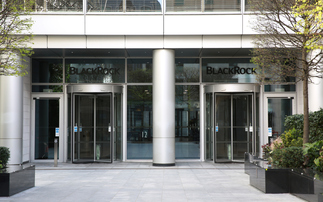
Jo Sharples: Not all private assets are created equal
The latest of the Society of Pension Professionals’ (SPP’s) regular columns says, while there are positives from the Accord, it will also pose challenges for the industry.
May 2025 heralded the arrival of the Mansion House Accord. A voluntary commitment by 17 of the UK's largest pension providers – almost half of whom are SPP members – to invest 10% of default assets into private markets by 2030 and 5% of those default assets into UK private markets.
The positives
The accord is a bold and positive commitment and one that promises to see substantial investment by UK pension providers into private markets such as infrastructure, real estate, private equity and private debt. And including UK private markets.
To date, default strategies have largely focused on public markets with extensive use of passive management to keep costs low. Including an allocation to private markets offers the potential to enhance expected returns, increase diversification, and therefore provide better expected retirement outcomes for members.
There are also wider benefits. Investing in productive assets that offer broader societal and environmental impact should result in better places in which to live, work and retire, as well as generating returns. This win-win is often referred to as additionality or double materiality.
One aspect I think is particularly exciting, and perhaps less talked about, is stewardship. We often think about stewardship in the context of public equities, where pension schemes typically hold a small fraction of the company shares in issuance. In contrast, ownership stakes in private companies are far more concentrated - this gives pension schemes the chance to exert far more positive influence and play a far greater role in their future direction.
The challenges
So far, so good. But what are the challenges?
It's easy to say that adding private markets will increase expected return. Achieving that will be far more difficult.
This might sound obvious, but not all private assets are created equal. The nomenclature spans a wide range of different asset types and strategies, as well as individual underlying assets. Within this there are some great opportunities and some not quite so good! Unlike public markets there is no market to track.
This makes asset selection absolutely key to delivering those higher expected returns to members. In turn this requires the right resource and experienced, skilled teams. Most pension providers simply do not have the resource nor capability to do this and will rely on external managers, hence manager selection is key. This is probably best achieved through using specialist, best of breed managers, rather than generalists.
The UK aspect of the accord has sparked much debate. The logic is simple but implementation is far more challenging. To avoid the situation where too many schemes chase too few assets and simply bid up prices for existing investors, the government needs to help on the supply side. This will require a joined-up strategy to ensure that the right policy and regulatory frameworks are in place to make the UK an attractive place to invest. While there are attractive opportunities, more needs to be done.
There is much talk about liquidity risk. In theory it is simple; private assets will sit within a pool of liquid assets which can be used to manage daily cash flow. In most cases this will work perfectly, but there will be times when private assets live up to their name and look very illiquid. Using evergreen funds will help. Equally having a mix of different managers with different strategies and underlying assets helps to manage this risk.
No article would be complete without mentioning cost. The fees for private assets are higher than for public markets and can be astoundingly complex! But many of them are pass-through costs paid to external third-party managers, rather than serving to increase revenue paid to pension providers.
This is an important distinction. Existing costs and charges disclosure was designed for a different world and needs to change to ensure it remains fit for purpose and facilitates transparent, comparable and fair disclosures across providers. Getting this right could unlock even more assets to invest in private markets. Most importantly it could really start to shift the focus from cost to value, which is long overdue.
Jo Sharples is an SPP member and chief investment officer for DC solutions at Aon







